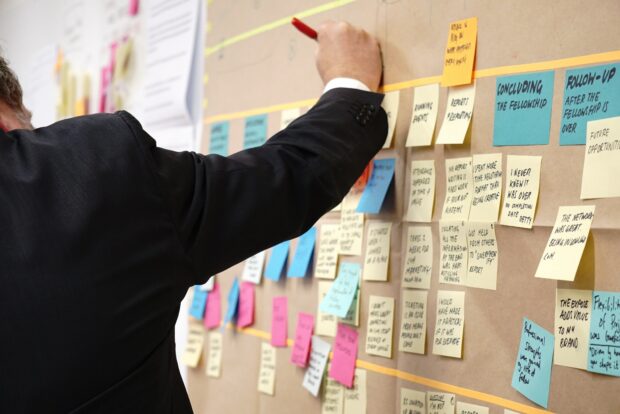At its core, project management is about focusing on a plan to execute a series of tasks to accomplish an end goal within a specific constraint. Projects take many different forms and are often defined by having to perform complex tasks under the constraints of limited budget and time. Before diving into the article I suggest that you the reader take the time to go back and look through the WIMS Guide archive to read some of the other insights from myself and my colleagues.
I have addressed some matters related to project management and am going to embark on a further process of highlighting my experiences moving through the world as a project manager. Projects can be scary, and this is something which I am aware of and address these myself as I go through my daily life both professionally and personally. Projects do not need to be fretted or feared but should be embraced to tell the stories about your own journey and the strengthens the organizations you are a part of through your career, civic engagements, and volunteer organizations.
Getting started with a project
A five part project, lifecycle which was compiled by Villanova University is a good starting place to understand the values of going through a series of steps to complete successful projects. These five distinct phases occur over the life cycle of a project. The ability to see structure through the course of a project and learn about the structure of the project lifecycle is valuable to both the project manager and the entire team who is implementing specific pieces of the project and are not entrenched in the language and specifics of project management.
Project Initiation: This serves the starting point for the entire project. Often feasibility and value for the course of the entire project are measured at the on set of the project before any additional planning has commenced. If the project seems feasible and profitable the project manager will move forward with the project and showcase how this specific project fits into the core of current business operations.
Project Planning: The project has been given the go ahead and planning is needed to get it up and running. A plan will differ slightly for every project but will often include an outlined schedule, budget, how risk will be addressed, and the scope of the project to outline necessary resources and departments involved in different phases of the project.
Project Execution: After the plan has been written the work on the project will be done. The deliverable goods or services will be delivered through a series of deadlines to involved stakeholders and sponsors. Executing a project can only happen by following and updating the project plan as work is accomplished and some tasks are met.
Project Monitoring and Control: As tasks and work is completed some deadlines will not be met and adjustments to resources and timing are necessary. The project manager must monitor, document, and control these changes to ensure the project can move forward towards completion.
Project Closure: The project will have an end date when it is delivered to the customer. The end of the project should involve communication with the stakeholders across the project and serve as an important closure point for the team members to look back on the time they spent on it. Furthermore, this closure can serve as a celebration to enjoy the successful completion of the project while sharing lessons learned and spending time with some project members for a final time.
Concluding Thoughts
The steps surrounding the project plan are not rigid steps which need to be followed like financial equations but are guidelines to improve the process and outcome of projects of all sizes. Project Management offers ways to improve scheduling and optimize different tasks across projects for both individuals and teams. Empowerment occurs working through complex projects using a well-developed project plan. It is vital to understand that while projects are difficult the ability to deconstruct them into simpler steps will allow the lifecycle of the project to be completed in an easier and more rewarding manner.
Resources
“The WIMS Guide.” WIMS Guide. Retrieved from https://www.wimsguide.com/tag/the-wims-guide/.
“Project Management.” WIMS Guide. Retrieved from https://www.wimsguide.com/category/project-management/.
“Project Management.” WIMS Consulting. Retrieved from https://www.wims-consulting.com/project-management.
“Five Phases of the Project Management Lifecycle.” Villanova University. Retrieved from https://www.villanovau.com/resources/project-management/5-phases-project-management-lifecycle/.
Photo by Jo Szczepanska.
